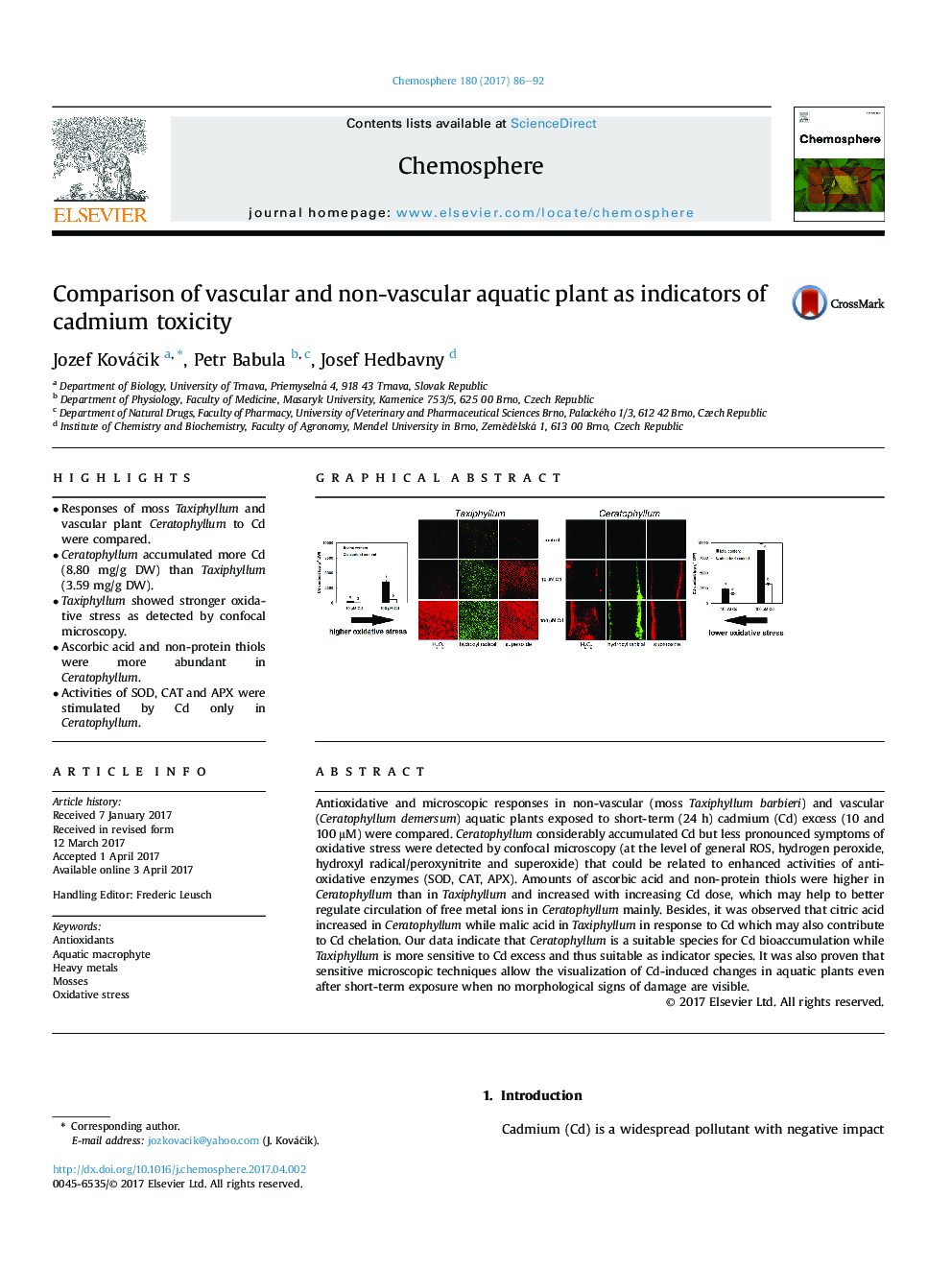| کد مقاله | کد نشریه | سال انتشار | مقاله انگلیسی | نسخه تمام متن |
|---|---|---|---|---|
| 5746136 | 1618791 | 2017 | 7 صفحه PDF | دانلود رایگان |
- Responses of moss Taxiphyllum and vascular plant Ceratophyllum to Cd were compared.
- Ceratophyllum accumulated more Cd (8.80Â mg/g DW) than Taxiphyllum (3.59Â mg/g DW).
- Taxiphyllum showed stronger oxidative stress as detected by confocal microscopy.
- Ascorbic acid and non-protein thiols were more abundant in Ceratophyllum.
- Activities of SOD, CAT and APX were stimulated by Cd only in Ceratophyllum.
Antioxidative and microscopic responses in non-vascular (moss Taxiphyllum barbieri) and vascular (Ceratophyllum demersum) aquatic plants exposed to short-term (24 h) cadmium (Cd) excess (10 and 100 μM) were compared. Ceratophyllum considerably accumulated Cd but less pronounced symptoms of oxidative stress were detected by confocal microscopy (at the level of general ROS, hydrogen peroxide, hydroxyl radical/peroxynitrite and superoxide) that could be related to enhanced activities of antioxidative enzymes (SOD, CAT, APX). Amounts of ascorbic acid and non-protein thiols were higher in Ceratophyllum than in Taxiphyllum and increased with increasing Cd dose, which may help to better regulate circulation of free metal ions in Ceratophyllum mainly. Besides, it was observed that citric acid increased in Ceratophyllum while malic acid in Taxiphyllum in response to Cd which may also contribute to Cd chelation. Our data indicate that Ceratophyllum is a suitable species for Cd bioaccumulation while Taxiphyllum is more sensitive to Cd excess and thus suitable as indicator species. It was also proven that sensitive microscopic techniques allow the visualization of Cd-induced changes in aquatic plants even after short-term exposure when no morphological signs of damage are visible.
410
Journal: Chemosphere - Volume 180, August 2017, Pages 86-92
